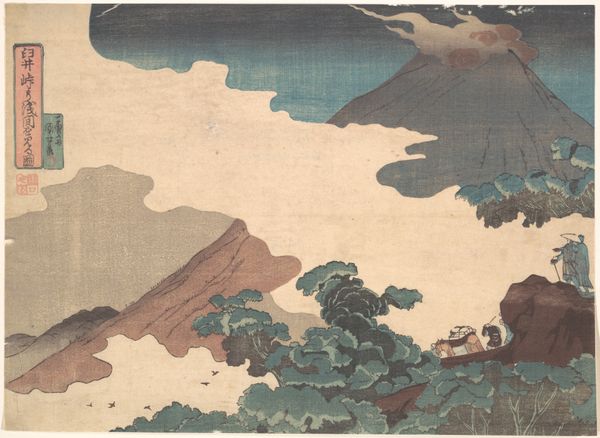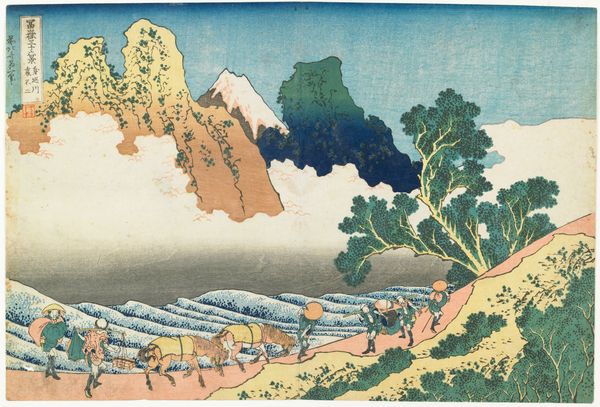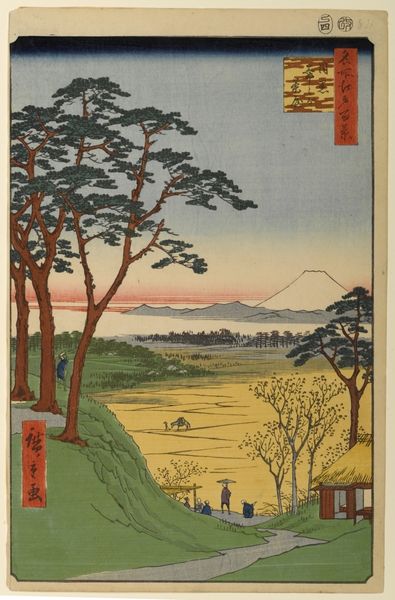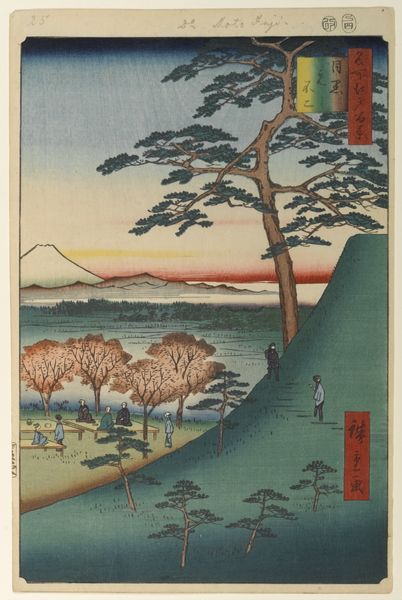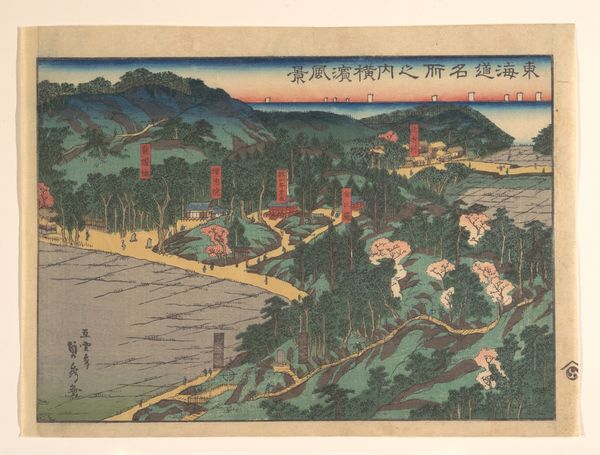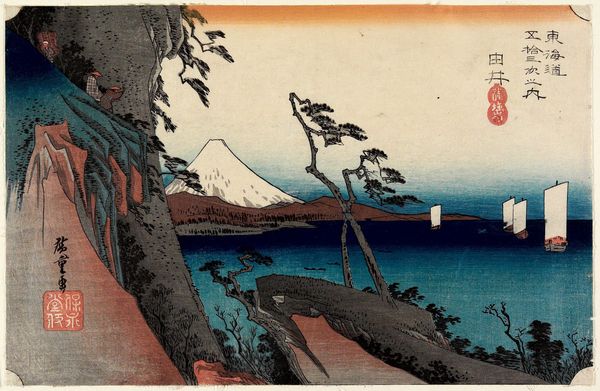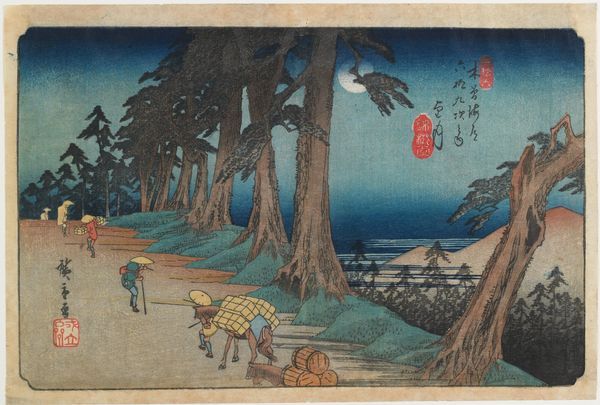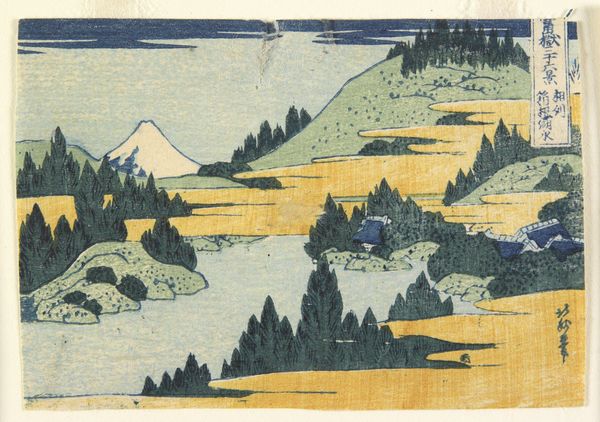
print, woodcut
#
tree
#
garden
# print
#
asian-art
#
landscape
#
ukiyo-e
#
woodcut
Dimensions: H. 5 7/8 in. (14.9 cm); W. 8 3/4 in. (22.2 cm)
Copyright: Public Domain
Editor: Hasegawa Sadanobu's "Inside the Garden at Takao," a woodcut print dating back to the mid-19th century, is striking! The autumn colors create a lovely warmth. What specifically stands out to you in this work? Curator: What immediately strikes me is the physical process. Look closely at the woodcut. Consider the labor involved: the carving, the layering of color, each applied meticulously by hand. Does that labor elevate the status of what might otherwise be considered craft? Editor: I hadn’t thought about it that way, but the repetition of the trees, all similar but unique, must have taken a really long time to carve. Curator: Precisely! And consider the social context. Ukiyo-e prints like these were commodities, produced for a growing urban middle class. The beautiful scenes weren’t just art; they were products of a system, available for consumption. Are these prints a form of landscape appreciation? Or were they consumer goods designed for wealthy patrons? How does the knowledge of their manufacturing change the artwork's intent? Editor: So it’s less about the serenity of the garden, and more about its availability, a constructed image mass produced through intense labor. Curator: Exactly! And even the colors— were these natural dyes? How were they sourced? The materiality tells a whole story of production and consumption in 19th-century Japan. It makes you question traditional divisions between "high art" and everyday objects. Editor: That is an important reminder that everything we see on display involves extensive and interconnected choices about material. Thanks, that was so insightful. Curator: Indeed. Thinking about the labor embedded within makes us appreciate these artworks in new ways.
Comments
No comments
Be the first to comment and join the conversation on the ultimate creative platform.

